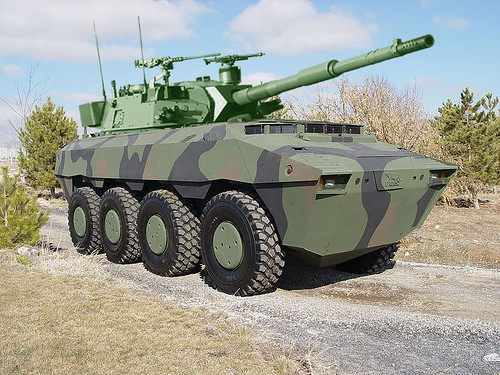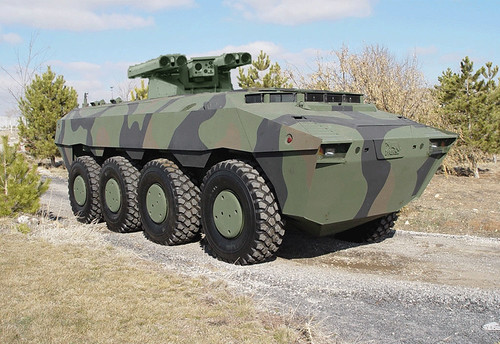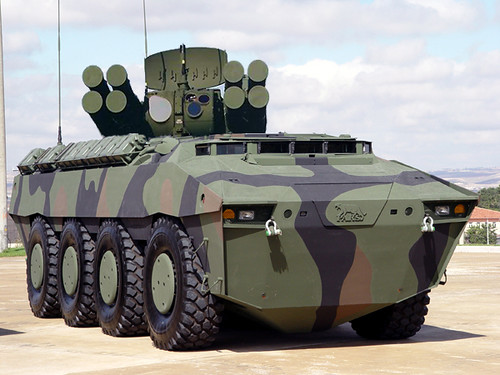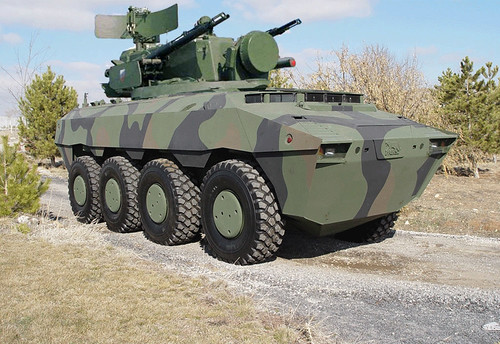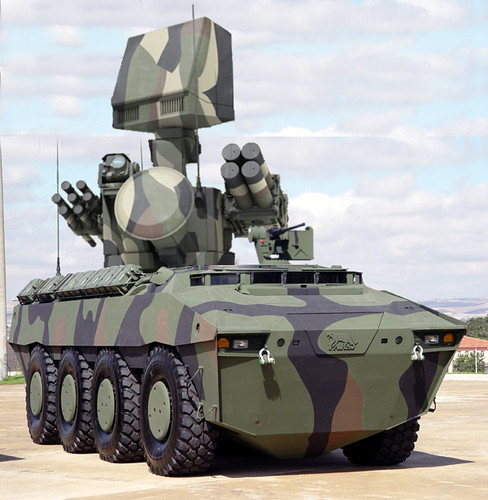A good article on Malaysian Armed Forces spending that is properly debated, and quoting the article itself
Sunday March 6, 2011
By BUNN NAGARA
sunday@thestar.com.my
Issues concerning Malaysia’s defence budget and arms purchases are re-emerging but more open and better-informed discussions will dispel common misperceptions.
IN the 1990s, there were ominous reports from mostly Western sources about a supposed “arms race” in East Asia. Such loose talk was often related to a presumed “China threat” that corresponded with a rising China.
Through the past decade until the present, such perceptions have returned based on accounts of growing national defence budgets. This time, the problem of conflicting claims to disputed maritime territory among Asean members is cited in addition to the spectre of a hulking China.
The current season of critical reporting about South-East Asian defence budgets coincides with the success of a new Strategic Arms Reduction Treaty (START) between the United States and Russia. By comparison, Asian countries are somehow seen as less responsible.
But responsible reporting itself must be clear about actual developments, not merely perceived ones. They must be grounded in solid evidence, not interpretations of assumptions.
An arms race is a mutually competitive relationship between two or more powers in acquiring additional weaponry. It stems from national ego or crude threat perceptions of the other side, not on mature strategic planning and careful assessments of a country’s actual needs in asset procurement.
Such a “race” is therefore unnecessary and wasteful, being invariably costly, self-propagating and an unjustifiable misallocation of resources. It carries a negative connotation particularly in terms of questionable public expenditure.
However, that is also where much misunderstanding of defence budget allocations begin. Like credible reporting of arms-related developments, assessments and criticisms must be founded on fair judgment and factual evidence.
There is no arms race when two or more countries in a region equip themselves with military hardware for reasons entirely or principally of their own, however large the defence budgets involved.
But there would be an arms race when they do so solely or largely because the other(s) are doing so as well, however small the budgets may be.
In the midst of talk about an “arms race” in Asean, an Australian defence official testified in parliament in September 2008 that there was no such thing going on. He, however, noted “a substantial military modernisation,” distinguishing between the two.
Also, since defence budgets cover acquisitions of increasingly sophisticated hardware, costs escalate from year to year without necessarily any enlargement in overall firepower.
Then there is the element of inflation and the question of currency exchange rates.
Most critics, however, rely only on the size of the budgets year-on-year. They typically assume growing belligerence without factoring in rising costs of production, inflation and currency exchange rates.
Ironically, year-to-year comparisons also tend to neglect how the previous year(s)’ budgets had been slashed, so that a revived budget looks (relatively) large. Malaysia, for example, has lately seen consecutive years of defence budget cuts.
The size of the defence budget alone may seem sensational but is ultimately insubstantial. Gross sums are an unreliable indicator of combat prowess, much less intent, since the single largest component of defence budgets universally comprises the salaries and employment benefits of personnel.
With new procurements in particular, personnel need to be trained or retrained. Costs increase again when the equipment is imported for which technical expertise lies abroad, as the personnel would have to be sent overseas for long periods, sometimes with their immediate families.
Further, there is also the issue of linkage between a nation’s economic fortunes and the size of its defence budget. When a country’s economy is doing well, it may be expected to aim for a larger budget in defence as in other public sectors.
But when the economy is not doing well, defence (and other public sector) budgets are expected to decline. And so some European critics, for example, are targeting some apparently enlarged defence budgets in South-East Asia, given the 2008 financial crisis.
Defence analysts, however, know there is a time lag between declining economic fortunes and defence budget downsizing. For this region, the 2008 crisis was less severe than in Europe or its source, the US, so the budgeting consequences have been modest.
Besides, since the largest cost component of defence budgets is personnel, the impact of an economic downturn is low or slow. Demobilisation of a country’s defence forces is a major decision that takes time to consider and decide on, and more time to have a palpable and appreciable effect.
An Australian study has concluded that “defence expenditure appears less prone to cutbacks” because of the large personnel component. And while it detected a link between economic health and budget size, the link was neither strong nor definitive.
However, the 1997 financial crisis that originated in and shook East Asia had a significant impact on defence imports. After the region recovered, procurements grew markedly and was seen abroad as disturbing.
There is also a common misconception that reduced defence budgets would in themselves enlarge budgets in other public sectors such as education and health. Scandinavian studies have shown no such reciprocal linkage, since the overall government decision-making transcends the defence sector alone.
A broader misperception is that defence expenditure is necessarily unproductive. A 2009 study in Malaysia examined the economy-defence relationship of five Asean countries over four decades (1965-2006) and found very mixed results.
The multi-authored Universiti Putra Malaysia study found that for Malaysia and the Philippines, “no meaningful relationship (between defence expenditure and economic growth) could be detected.” Nonetheless, popular perceptions about invariably wasteful defence expenditure prevails.
Among the basic facts for any country are that national defence is a continual need, and defence budgets are necessary. Pertinent questions would then concern the budget components, in particular the type of equipment purchased.
Apart from new acquisitions and occasional equipment updates, military forces also require periodic replacements of worn hardware. The Royal Malaysian Navy, for example, is due for major replacements of surface vessels within a decade.

Need for practical items
Malaysia needs more multi-function assets like transport aircraft and ships, OPVs (offshore patrol vessels) and spotter aircraft, including helicopters, rather than prestige inventory.
These practical items are essential in military and quasi-military functions like regular patrols and interdictions at sea against smuggling, human trafficking, illegal migration and piracy as well as search-and-rescue operations. A degree of interoperability would therefore make sense.
Various national agencies require such procurements: the Fisheries Department, Customs and Excise, Marine Police, Maritime Enforcement Agency and the Navy. A long coastline in both East and Peninsular Malaysia, and disputed island territory, add to these routine needs.
For its part, the Malaysian army still needs more basic infantry items like field armour. In the interests of budgeting, cuts are made in areas like (UN) overseas postings to make up for needed expenditure elsewhere.
Indonesia and the Philippines are sprawling archipelagic nations with innumerable maritime territories between thousands of islands. But their operating needs are often overshadowed by budgetary constraints.
Thailand’s government-military relations have fluctuated with the party in office, which has in turn fluctuated considerably.
Singapore is by far the biggest spender in the neighbourhood, its defence budget for fiscal 2011 rising 5.4% from last year to S$12.08bil (RM28.89bil).
Singapore is also the region’s most robust economy, posting a high 14.5% growth last year. Growth alone does not account for enlarged defence budgets, but when coupled with a nation’s lack of strategic depth it can produce a compelling need for enhanced security.
Malaysia’s defence budgets have been cut in recent years, as expressed partly in a 30% demobilisation, but actual expenditure has repeatedly exceeded budget allocations. The 2011 defence budget is a modest RM9.1bil, down by some 20% from last year.
The Defence Ministry wants to make better use of existing equipment in place of more new acquisitions, after some high-profile procurements in recent years. Overall, Malaysia’s emphasis is on consolidating the economy as a firm foundation for a more robust nation.
The key defence issues are threat perceptions, strategic planning, operational purposes, maximal use of assets, streamlining, harmonisation, optimalisation and old-fashioned value for money.
And then there is the question of whether ultimate decision-making for these lies best with political or military leaders.
There is still a lack of vigorous debate based on updated information and educated opinion on such matters of great public interest. Opposition political parties still have no cohesive and coherent alternative plan, for all their pent-up anxieties.
This is where informed groups and individuals, motivated by the national interest rather than narrow partisan concerns, can help enrich discussion by contributing what ideas they can.



